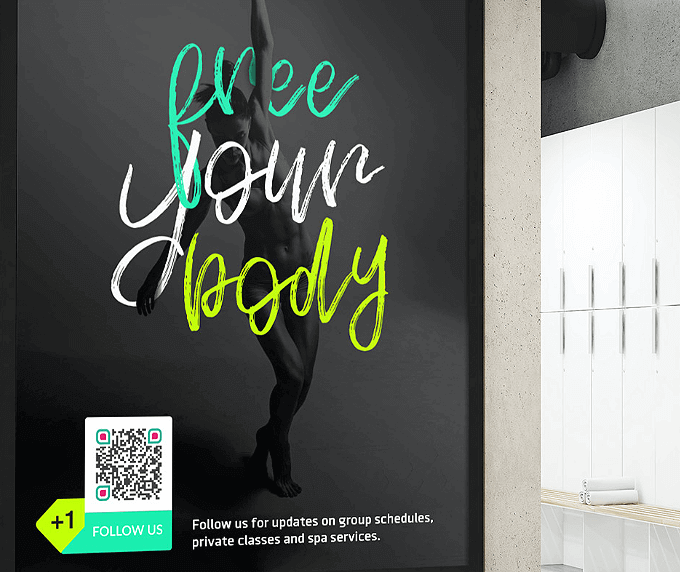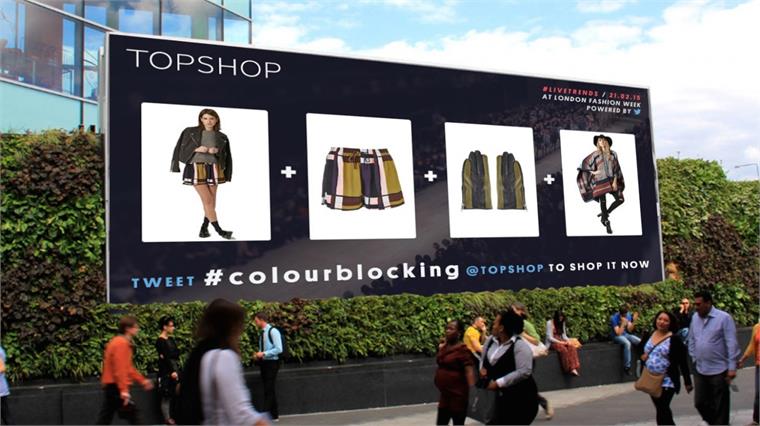6 Creative Ways To Combine Online & Offline Marketing
Omnichannel has been a buzzword in the marketing community for a long time now. Every marketing influencer, agency, or even colleagues will tell you that if you are not distributing your content well, you are not all in. And we agree. We also believe that omnichannel is the most effective way to optimize your content.

But is it truly omnichannel if you are working on online channels alone? Cross channel or omnichannel marketing becomes successful when all your marketing mediums come together to achieve your goals.
It may seem like an impossible and unnecessary task to combine your online and offline channels because consumer intent is usually different on these channels.
However, what studies are telling us now is that while the intent is different across channels, your marketing goals are more or less the same. You are either looking to establish your branding identity, generate awareness of products, or convince customers to complete the transaction.
So why shouldn’t you combine your online and offline marketing efforts to achieve your goals? Isn’t that more efficient than running isolated campaigns on online and offline channels?
Yes, it is. And that is why Kimp brings you 6 creative ways to combine online and offline marketing campaigns with design tips to enhance them.
Get more out of your campaigns with the exclusive tips from this blog.
- Combining online and offline marketing campaigns
- Why combine online and offline marketing campaigns?
- 6 Creative ways to combine online and offline marketing campaigns + Design Tips
- 1. Drive qualified traffic to your physical stores from online channels
- 2. Reduce sales friction in stores by connecting online channels
- 3. Start conversations online with offline campaigns
- 4. Build an email list offline
- 5. Combine your online and offline events
- 6. Update print materials with digital addresses
- Integrate your online and offline marketing with Kimp
Combining online and offline marketing campaigns
Before we go any further, let us define online and offline marketing campaigns and what we mean by combining them.
Online marketing campaigns are primarily content marketing, and advertising campaigns businesses may run on online mediums. This includes all campaigns on search engines, websites, banners, social media, newsletters, affiliate marketing, and so on.
Offline marketing campaigns are campaigns that happen off the internet. This means traditional marketing mediums such as posters, flyers, billboards, in-store displays, signages, vehicle wraps, word of mouth, and so on.
Now some campaigns span both these mediums, such as referral marketing, guerilla marketing, and so on.
The retail industry has already begun leveraging one channel to generate traffic to the other. One popular strategy here is online to offline commerce, wherein brands are driving traffic to their retail stores via successful campaigns.
When we speak of combining online and offline campaigns, we recommend using these techniques for both these channels. Since brands are working on establishing a strong presence online and offline, combining these marketing channels is the need of the hour.
It sounds great but are there any tangible benefits to this practice?
Why combine online and offline marketing campaigns?
While online campaigns are extremely popular, we must never discount the value of offline campaigns. A report from Think with Google tells us that even as the ecommerce industry clocks trillion-dollar revenues, customer sentiment is still not completely moved away from offline shopping.
Consumers still want to experience stores, check products out physically, and pick up their orders instantly instead of waiting for shipping times. People are also looking to support local small businesses and feel that offline store experiences are better for them than online sales wherever possible.
Even for industries outside the ecommerce industry, there are many tangible benefits in combining online and offline marketing campaigns. Some examples are:
Improved reach across channels
You have spent years building your content across online and offline channels. Maybe one of these channels is performing well while one is not. If you want to improve your reach on the low-performing channel, the best thing to do is to leverage the high-performing channel to direct traffic to the low-performing one.
This way, you can balance the reach and even bring your online audience to boost the offline channels.
Indiana University leveraged its student base to turn its print prospectus and marketing materials into viral social media campaigns. Now, anyone worldwide can access their print material and know about the college. They just increased their reach beyond any campaign could have with a hashtag.
Higher ROI on marketing goals
More often than not, your marketing goals on both online and offline channels are the same. So, when you combine the efforts on both these channels, the effectiveness of these campaigns improves. You expand the audience for these campaigns which will, in turn, improve the ROI you can get out of them.
Enhanced understanding of customer base
This is probably one of the most underrated benefits of combining your online and offline marketing campaigns. Till now, you were working in silos with the audience interacting with each of these ads or content pieces. But, now you are combining them and taking the consumer on an enhanced experience.
You can track which customer became an offline patron and who became a subscriber after visiting your store. This gives you insight into what your customers want and helps you deliver that seamlessly.
Now that we know why we must combine online and offline marketing, let’s get down to action with the next section.
6 Creative ways to combine online and offline marketing campaigns + Design Tips
You may wonder, is it even possible to combine online and offline marketing campaigns? How can you promote a social media campaign offline? And in billboards meant for brand awareness, how do I even make them relevant for my online audience?
Well, that and a lot in this section await you. So, let’s get started.
Kimp Tip: While we will describe some of the many ways you can bring an online experience to your offline audience and so on, there is one thing to remember across all these ideas. And that is the importance of design and branding consistency in these mediums.
You are taking your customer from a point “A” on one channel to a point “B” on another channel. In this journey, every touchpoint and content they cross must look, sound, and feel the same to them.
And on that note, let’s see what paths that journey can take.
1. Drive qualified traffic to your physical stores from online channels
We know that customers on ecommerce sites are not always averse to visiting physical stores when it suits them. What about when they have no intention to do so, but you want to drive traffic to physical stores?
Traditionally, billboards, flyers, vehicle wraps, and local events increase the foot traffic in stores. But, there is one inherent flaw in this plan. These techniques allow you to target local audiences, but they are still not qualified leads. Most of them end up browsing the store and leaving.
How can you remedy this?
Divert your qualified online traffic from an ecommerce store, website, app, social media, and newsletter lists to your physical stores. You know they love your brand, if you can get them in, then you can hear the cash register ring “Ding Ding Ding”!
Design ideas that can help you accomplish this:
- Revamp your product pages to list the nearby store and the reduction in shipping time if customers opt for this.
- Incentivize your online customers to visit stores with an exclusive limited-time discount code they can get off your social media profile. Instagram story campaigns, Snapchat campaigns, or Twitter are some platforms ideal for this.
- Promote offline sales on online channels to spread awareness across channels.
- Host live shopping streams where the customers present in-store win rewards.
Kimp Tip: When you implement these ideas, ensure that you include your branding and store information prominently. Your customers are visual creatures, and the more they see your brand identity (logo, brand name, storefront image, and so on), the better they will remember.
Need help to bring the online and offline world together cohesively? Try Kimp Graphics and Kimp Video – our unlimited design subscriptions!
2. Reduce sales friction in stores by connecting online channels
We just saw that your online channels can help you boost your offline purchases by fixing the flaws in the system. What if we implemented the reverse of this as well?
Did you know that your in-store customers can help you improve the reach of your online campaigns as well? Yes, this is possible.
Remember when we spoke of both online and offline marketing campaigns having the same goal? In such cases, a lost opportunity on one channel is time for the other channel to step in.
For example, when you run discount sales, stocks usually go out fast in your physical stores, and customers rarely make the second trip when the product is back in stock. If you place well-designed and strategically placed posters to inform customers they can access the same product online, you can save that sale.
By leveraging technology, your customers don’t even need to look up the site. They can scan a QR code, and it can take them online to the same product’s page in a jiffy.
Even for non-product related campaigns:
- You can display your current online campaigns in your store and motivate your customers to find you there
- Showcase your best online content as a preview to generate interest in these channels.
Adopt a digital-first strategy and bring the online experience to your offline customer touchpoints. You will instantly see a smooth transition between consumer journey stages. But remember, consistency in visuals across channels is of paramount importance here.
3. Start conversations online with offline campaigns
While small-scale businesses and retailers are contemplating if combining online and offline marketing is even possible, social media giants are already doing it.
What are your main content marketing and advertising channels on the internet? Google, Facebook, Twitter, and Instagram? What if we told you that all these social media companies are increasing their investments in offline campaigns?
Yes, Google is leading in TV campaigns in the Asia Pacific region while Twitter and Facebook have major billboard campaigns under their belt worldwide. Not just brand awareness campaigns but these companies are actually running AI-powered real-time live ads to bring people online.
In fact, Facebook is encouraging its advertisers to combine Facebook and OOH to drive better results.

Check this campaign by TopShop wherein the brand curated top looks from Lakme Fashion Week and featured them on a digital billboard. Customers can tweet to the displayed account and hashtag to get a shoppable link to the product. All the reach of OOH advertising with the ease of digital commerce. Best of both worlds, truly!
Kimp Tip: A major reason for the success of this billboard is the accessibility of the brand’s name and the hashtag on it. When you are working across platforms, ensure your brand name and significant details such as handles, profile names, and hashtags stand out. That spells instant success.
Looking for a team to design digital billboards? Get a Kimp Graphics + Video design subscription!
4. Build an email list offline
Marketers know the value of a customer’s email id. Building an email list is one of the most important tasks for any campaign’s success. And for this, we work on many strategies such as brand awareness ads, landing pages, lead magnets, pop-up windows, giveaways, and so on.
But can you do this offline?
Yes, you can and many businesses have been doing this for a long time. But it has become a little different and difficult in recent times. People are wary of spam and do not divulge their email addresses easily.
So break out what works online in your offline campaigns. Give a reward in exchange for the email. But how are you combining online and offline marketing here?
The reward must bring them to your online platforms.
This has twofold benefits:
- The customer understands that the benefit you are offering has a digital presence so the email address makes sense. You have removed the friction from the process.
- You can instantly initiate a conversation on the given email. And you know that the customer is expecting it so they will open it and click on the CTA to collect the reward. If you make a good impression with the first email, you are on your way to building a long-term relationship.

Promoting a giveaway offline and including scannable digital addresses is one of the best ways to build an email list via offline channels. This design from the Kimp team is a great example of how it is done.
Kimp Tip: Keep the first email simple and to the point. As much as possible, leverage visual aids to ensure customers read through the content. Position the reward information at the beginning itself to build trust and then introduce yourselves.
Looking for email marketing designs that stand out? Try our Kimp Graphics + Video unlimited design subscription.
5. Combine your online and offline events
Events help brands to engage with their customers, drive traffic to social media pages, and improve footfall in physical stores as well. It is a great passive sales and marketing tool.
Even in isolation, online and offline events make a huge difference for your brand. What if you brought them together? Yes, this is definitely possible with a little planning. You have to just tilt your strategies a little.
Traditionally, offline events see a lot of local marketing efforts while online events see traction online. This is because we assume that is where our audience is. Maybe, why not expand to a bigger audience base?
You can start by:
- Promoting your offline events on your website, social media handles, and newsletters. Not just as a passing mention but run full-fledged campaigns with countdowns, reminders, and passes via giveaway contests.
- Publicize your online events in your stores, billboards, and print ads. Make the event accessible with QR codes and prominently displayed details of handles and dates.
- Holding hybrid events wherein your customers can either walk into your physical stores or tune in via your digital handles.
- Running omnichannel contests or events that begin online and end offline or vice versa.

6. Update print materials with digital addresses
Last but definitely not least, is updating all your print materials. And we mean everything. Right from your posters, flyers, billboards, vehicle wraps, to in-store displays. Ensure that you mention your digital addresses – website, ecommerce store, social media handles, and other contact information here.
It might sound simple but for a customer looking for a way to easily access your information, this is a godsend. They can now choose which channel to interact with you and that is a huge value-add.
So is it enough to just include the handles? And how will you track the traffic?
We have a single answer to both these queries. QR codes. We know that this seems to be the popular option now, but hey! It works! You can then redirect your audience to a custom landing page that records this traffic and directs them further to wherever they want.
It is a simple solution that connects your offline customers to your online experiences.
Kimp Tip: When you design print designs to promote your online channels, try to include colors and designs that reflect these channels closely. This way, the customer can have a smooth transition without any major culture shock.
To ensure your online and offline marketing designs match without any discrepancy, build a brand style guideline. This way, you can ensure branding consistency without any hassle.


Above are some examples on how to include and leverage digital addresses on print materials from Kimp.
Integrate your online and offline marketing with Kimp
One thing is very clear from this blog. No marketing channel can exist in isolation and brands must ensure that their campaigns on each channel successfully cross over to the other. This is the only way to leverage customer data in saturated markets in competitive industries.
It also teaches us that a brand needs offline marketing as much as they need online campaigns. And they need them to work in harmony.
But how do you get all this done?
This may seem like a herculean task but Kimp’s unlimited design services, Kimp Graphics and Kimp Video can deliver this with ease for you. Our flat fee service provides access to unlimited design requests spanning online and offline channels across 100+ categories.
And you only pay a monthly fee and nothing additional for any design requirement or revision request.
Sounds like something you need? We bet! Sign up for our free trial now to get a preview of our design workflow before you commit!



